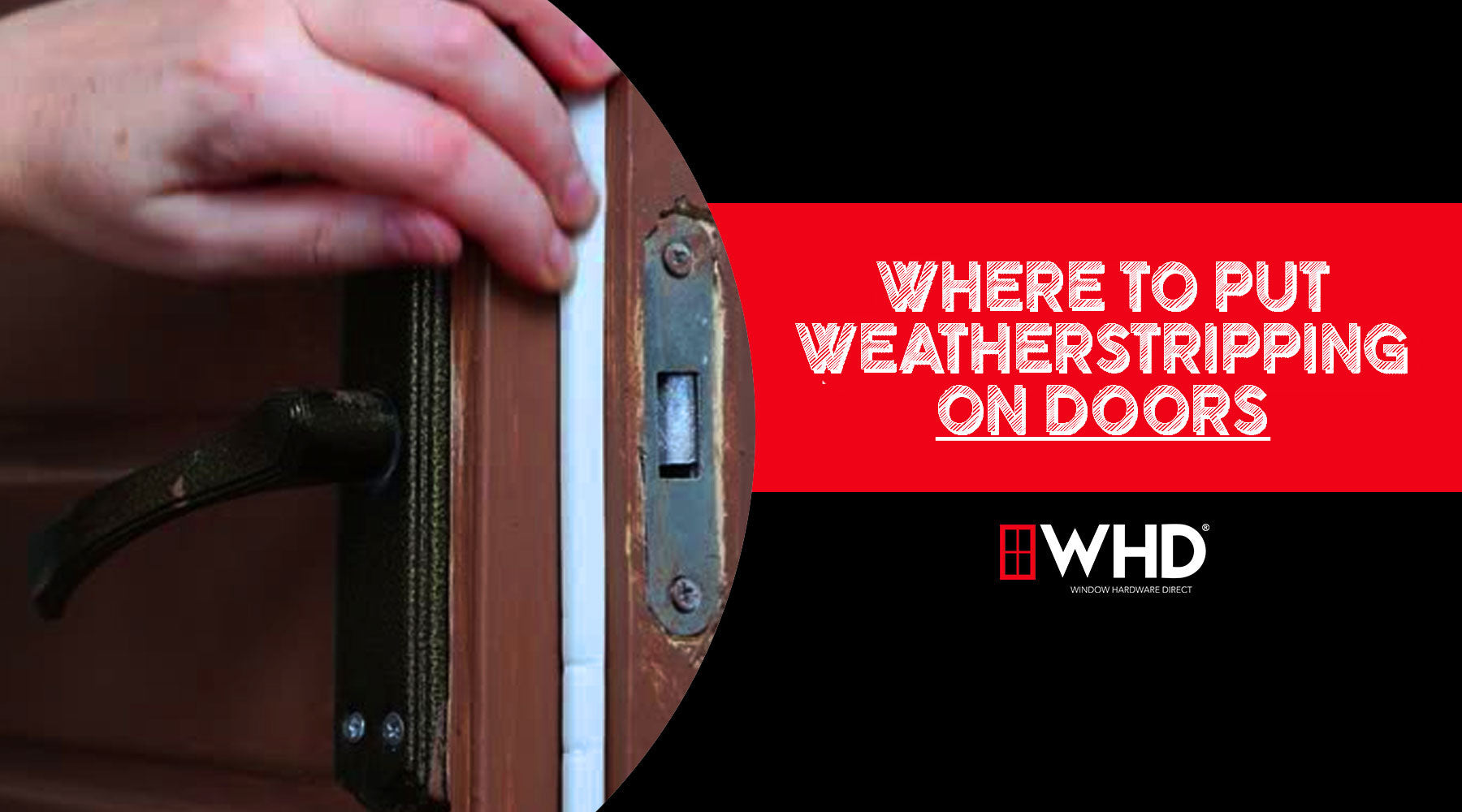
Where to Put Weatherstripping on Doors
What is weatherstripping, and why do doors need it?
Weatherstripping is a sealing material—often made from rubber, foam, felt, or vinyl—that’s applied to doors (and windows) to block drafts, moisture, dust, and insects. Doors naturally have small gaps around their edges and bottoms, which can lead to higher energy bills and uncomfortable temperature fluctuations. Adding weatherstripping helps create a tighter seal, improving insulation and comfort in your home or business.

Where to put weatherstripping on doors for the best results?
Weatherstripping should be placed anywhere air can seep through. The main areas to focus on are:
-
Along the sides (jambs) – Apply adhesive-backed foam tape or V-strip along the vertical sides of the door frame to seal gaps when the door closes.
-
Across the top (head jamb) – Add weatherstripping to the top edge of the frame to block drafts above the door.
-
At the bottom (door sweep or threshold seal) – Install a door sweep or threshold seal to prevent air, water, and pests from entering under the door.
By sealing all three areas—the sides, top, and bottom—you create a full perimeter seal for maximum efficiency.

How do I know what type of weatherstripping to use for each area?
Different spots require different materials:
-
Butyl tape – Easy to apply, great for uneven gaps around sides and top.
-
V-strip (tension seal) – Ideal for tighter spaces around door frames.
-
Door sweeps – Best for exterior doors; attach to the bottom edge.
-
Threshold seals – Provide a permanent, durable bottom seal for heavy-traffic doors.

Can I weatherstrip all types of doors?
Yes! You can weatherstrip front doors, back doors, patio doors, and even interior doors leading to garages or basements. Just make sure to choose the right style for the door type—exterior doors often need more durable, moisture-resistant materials, while interior doors can use lighter options like foam tape.

How often should weatherstripping be checked or replaced?
Inspect your weatherstripping at least once a year. If you notice drafts, peeling, cracks, or compressed areas where the seal isn’t tight, it’s time for a replacement.

Conclusion
Knowing where to put weatherstripping on doors is key to making your home more energy-efficient and comfortable year-round. Focus on the sides, top, and bottom of the door for a complete seal—and choose the right materials for each section to ensure long-lasting protection. For more information or assistance ordering the right weatherstripping, Contact Us Today! The WHD Team looks forward to speaking with you.
